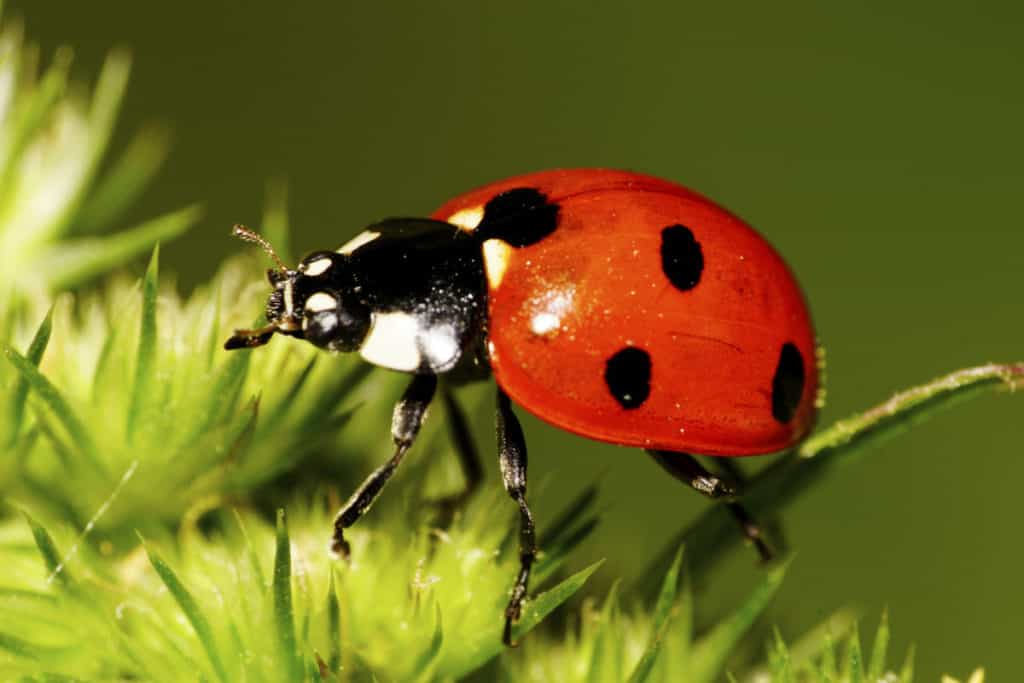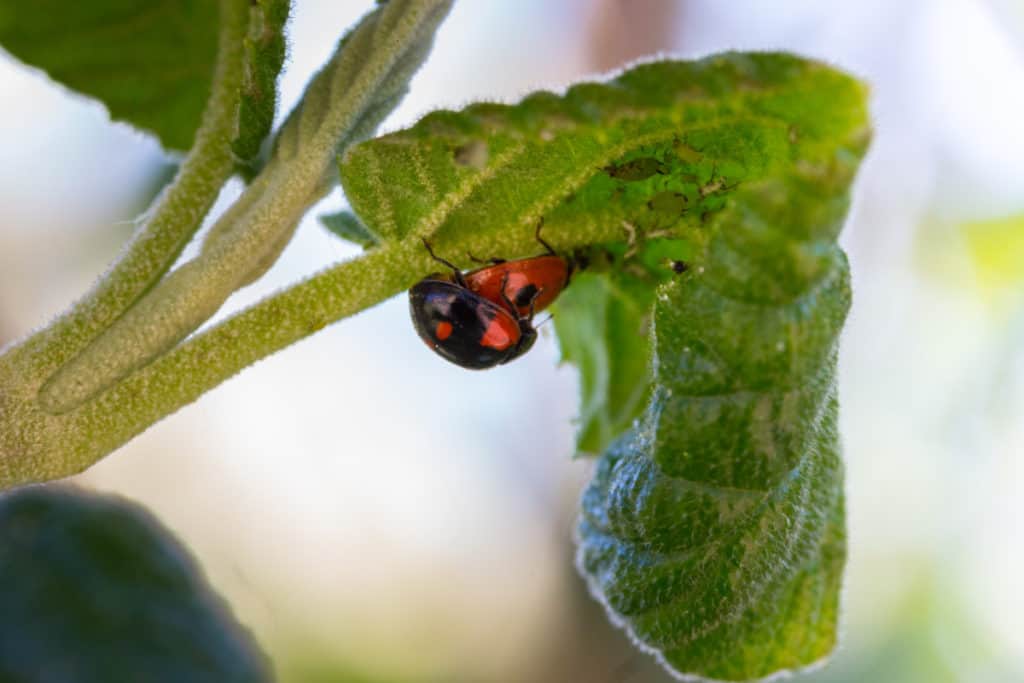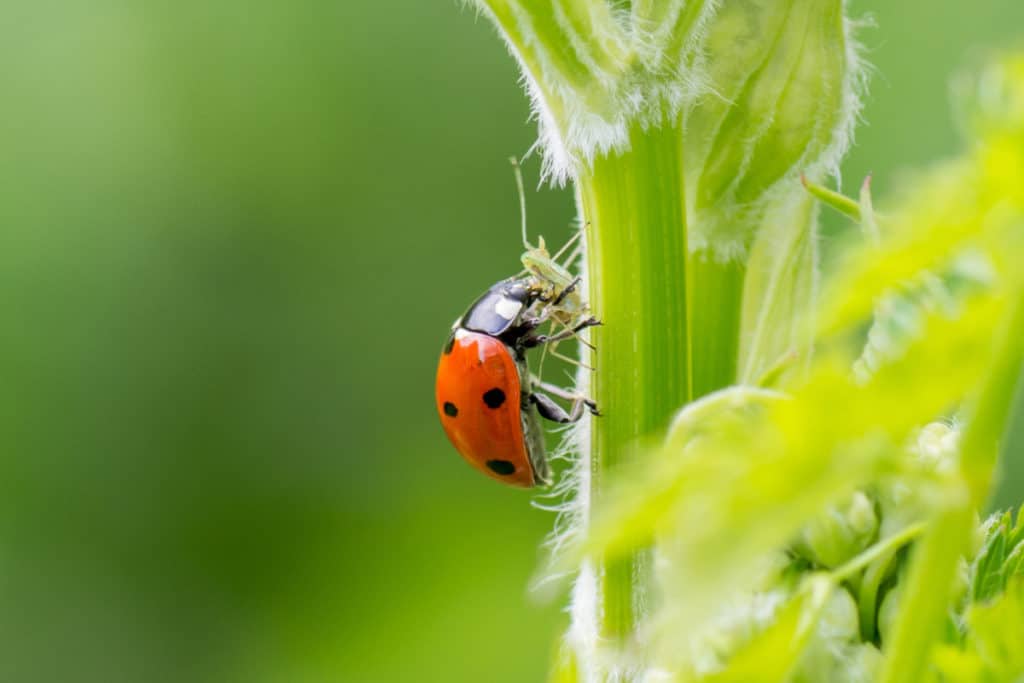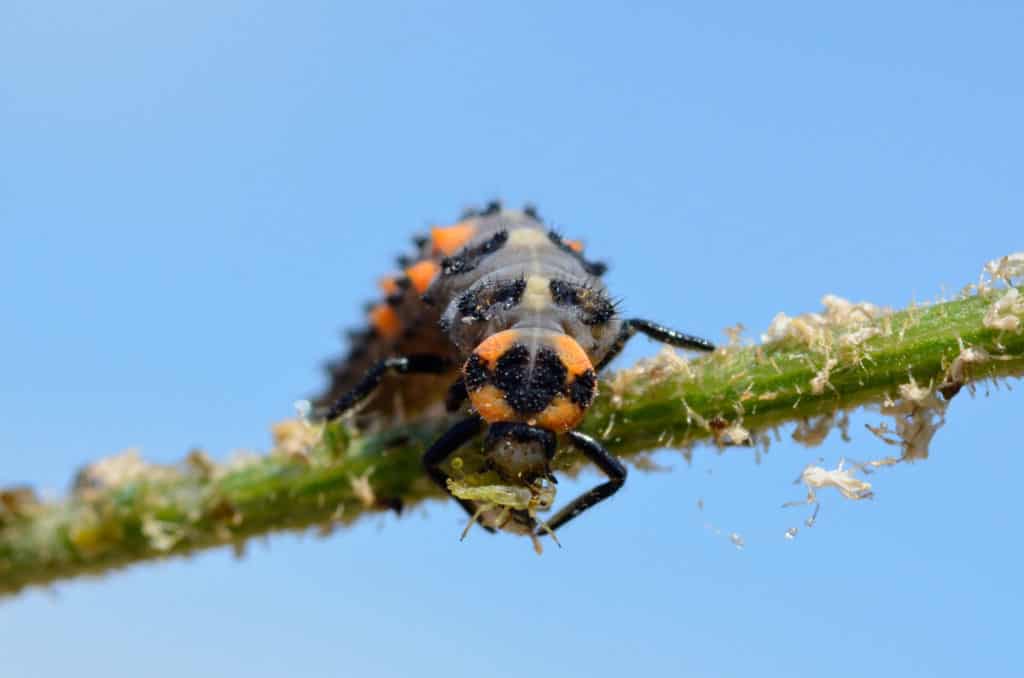Ladybugs seem to tuck their little leg under their bodies when you get close to them. This can make it difficult to really know how many legs they have.
How many legs do ladybugs have? Ladybugs have six legs. They are part of an arthropod group called hexapods meaning they have six legs. Their legs are not only made for walking they also part of the ladybug’s sensory system. one pair of legs release a foul-smelling fluid as a defense mechanism.
There is a whole lot more to know about the 6 little legs of a ladybug. You might be surprised to know they provide far more than the ability to walk. Hang around and read on as we take a deeper look into why the ladybug’s legs are more like a swiss army knife.
And we’ve shared all the results of our research on this page as well. All so you can come away knowing a little bit more about one of the most loved bugs on the globe.
Ladybug limbs: their anatomy and function
Insects generally have jointed legs, attached to their thoraces or chests. Like their other body parts, insects’ limbs often vary from one species to another and those of ladybugs happen to be rather short compared to those of larger more dynamic arthropods such as grasshoppers or even butterflies.

Each of a ladybug’s six legs is divided into the following:
- The Coxa
- The Trochanter
- The Femur
- The Tibia
- The Tarsus
The coxa: The part of the leg that attaches the rest of the limb to the body.
The trochanter: The part which connects the coxa to the femur.
The femur: This especially prominent segment is rather well developed in more ‘athletic’ hexapods (a somewhat fancy term for insects based on the fact that they have six legs). In ladybugs, it is rather short and the tarsus is the longest.
The tibia: Quite frequently the longest part of the leg, the tibia may be used to clean certain body parts in some species. In bees, it contains the pollen basket, a collection of stiff bristles with which they gather food for their hive.
Certain species of ladybugs such as the Asian variety have tibial spurs, however, this feature is absent in others.
The tarsus: The part which is furthest from the thorax, the tarsus is divided into segments referred to as tarsomeres.
Most ladybugs have three of them while other species of insects may have five of them.
While ladybugs’ legs may initially appear nondescript, and suitable for little more than scurrying about, the fact is that they function as an important defense mechanism.
When a ladybug feels threatened, all it has to do is move its legs slightly and have the joints (those between the tibia and the femur, to be precise) bleed and release a foul-smelling chemical that is present in its blood.
Even a slight nudge is sufficient to cause such a response.
The process by which this substance is released is known as reflex bleeding. And while it might be effective for them and ensure they get to live out the rest of their lifespans hale and hearty, it can be bad news for houseproud homeowners whose residences they may have taken a liking to.
Bleeding each time they get a nasty fright will result in any surfaces they occupy becoming stained.
Do they use their legs for other functions, i.e., sensory
They certainly do. Ladybugs are actually capable of using their legs to taste and smell.
In addition to using their limbs in this manner, they also use their antennae to detect the flavors and scents of the world around them.
The ladybug’s antennae is a complex part of their anatomy. It is fascinating many of the ladybug’s sensors are tied to their antennae. We have an article that takes a deep dive into this topic it’s called, Do Ladybugs Have Antennae?
How are ladybugs able to hang on upside down?
Even though ladybugs are not generally associated with impressive levels of agility, they have this pretty cool skill where they can hang upside down.

According to scientists who have taken a closer look at these colorful beetles, the secret to this awesome ability lies in the thin, somewhat sticky strands of hair they possess on their legs.
In addition to being able to hang upside down, ladybugs are also quite capable of doing so on a variety of surfaces.
The key to this ability can be found in the change in composition along each hair shaft which starts out stiff and bristly and ends up delicate and supple at its tips, lending the tiny critter an impressive degree of adaptability when navigating different surfaces.
Do they use their legs when capturing prey?
As a rule, no, they do not — at least not when eating aphids. Fortunately for ladybugs, these prey aren’t the most alert: all the larger insects have to do is simply walk up to them, grab them using their mandibles, and munch leisurely before proceeding to the next.
Adult ladybugs will use their front pair of legs to help manage their prey when needed. The real work is done by their mandibles but we have certainly seen them using the front legs as part of the process.

Ladybug larvae on the other hand tend to use their font pair of legs more as the mandibles are less developed the adult ladybugs.

How do they use their legs to escape predators?
Ladybirds aren’t quite capable of moving with speed like butterflies which will flitter away when you come too close, or cockroaches which will race for cover in the face of danger.
But one thing they have in their favor is their ability to play dead rather convincingly — a talent most beetles share.
They do so by rolling on their backs. Their legs also play a key role in this elaborate hoax: they fold up for an extra touch of authenticity and release that especially smelly substance to further deter the potential predator from taking a bite, just in case it isn’t all that convinced by their act.
This raises the question of whether ladybugs are poisonous. We have actually dedicated a whole article to this topic if you are interested it’s called, Are Ladybugs Poisonous?
Can ladybugs regrow their limbs?
Unlike spiders which get to molt and regrow severed limbs, ladybugs have to be super careful in keeping themselves from harm. Any legs that might get snagged between a piece of bark during a hasty escape from a predator will never grow back again.
The same applies to their other body parts such as their antennae and wings.
The proof of just how careful they have to be can be seen in the presence of those colorful outer wings called the elytra.
This carapace serves to cover ladybirds’ wings which they use for flight and which are actually four times longer than their own bodies.
And once they land, the tiny critters must fold them back very carefully under this protective covering to ensure no harm comes to them.
Do they use their legs when eating?
The ladybugs we observed snacking on aphids simply snatched up one victim before chewing voraciously on it and then helping themselves to another mouthful.
Adult ladybugs don’t always use just their mandibles to capture their prey. If needed they will use their front pair of legs to help subdue their prey.
Ladybug larvae more often use their front pair of legs when capturing their prey as their mandibles are not as well developed yet.
If you’re interested we have a whole article on what ladybugs eat. Their diet is quite fascinating. The article is called, What Do Ladybugs Eat?
Essential body parts for stability and defense
As arthropods, ladybugs have jointed limbs that are the hallmark of their kind, and the fact that they belong to the largest family ever where living creatures are concerned, also makes them hexapods.
But ladybugs use their six legs for more than just walking. They are also used as a defense mechanism owing to their ability to secrete hemolymph (a fancy term for insect blood) and repel potential predators with the unpleasant-smelling substance it contains.
Ladybugs also use their limbs to taste and smell making them extra useful since they function as sensory organs of sorts.
Unlike spiders, their fellow arthropods, distant cousins, and occasional predators, ladybugs are incapable of regrowing any injured limbs. This means they must be extra careful with the special set gifted them by Mother Nature.
Only then will they be able to live life to the fullest and enjoy the abundance of scale insects, spider mites, and whiteflies it has to offer.
Sources
Canadian Wildlife Federation, Science Daily, University of Colorado, University of Florida
